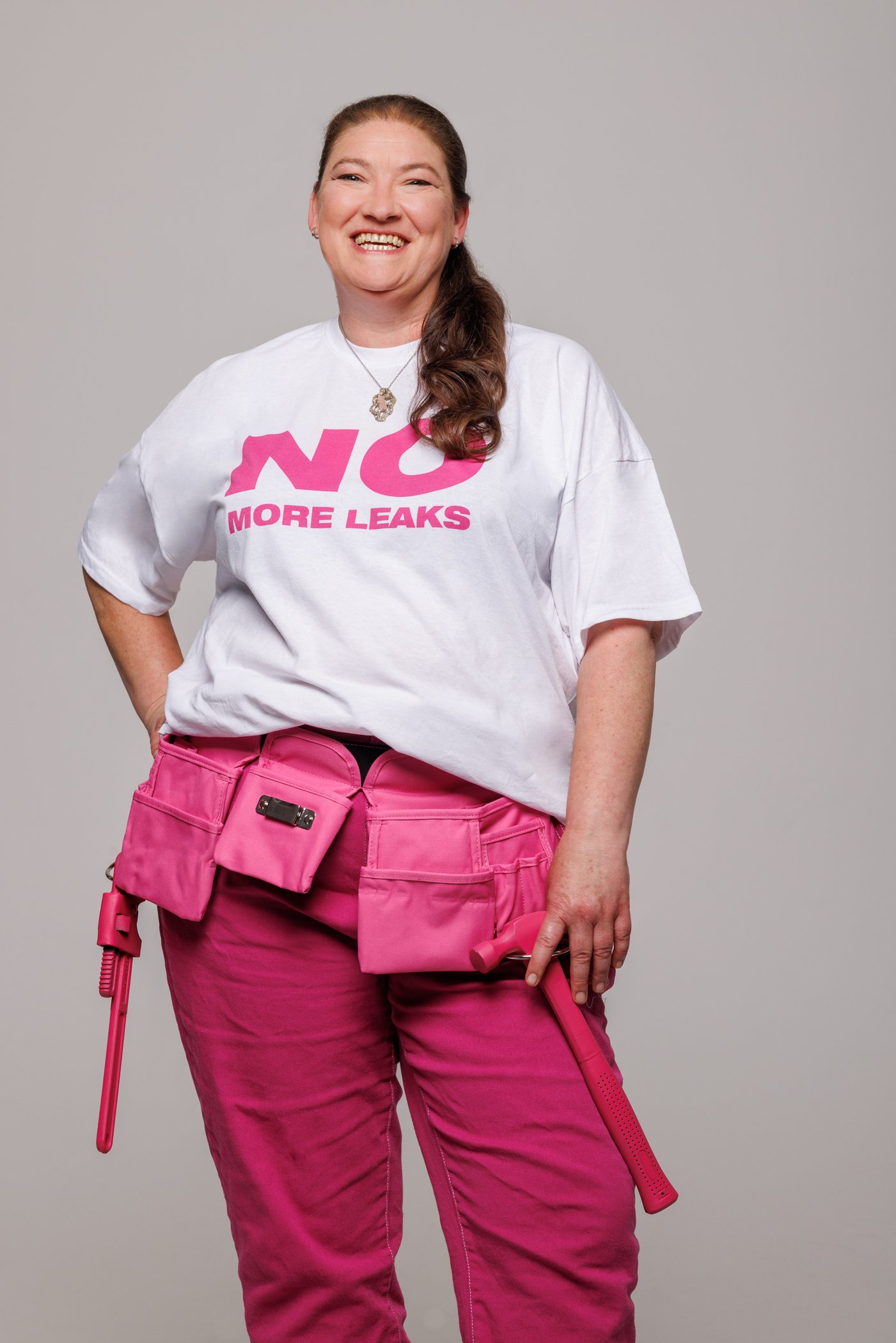World Continence Week – 17th – 23rd June 2024

Some facts
New research reveals almost 1 in 10 women (9%) experience pelvic floor leakage every single day and over a third (34%) experience it at least weekly. [1] To put this into perspective, just 3% of men experience this once in up to a year [2] – and even the average toddler is only likely to have an ‘accident’ occasionally once they have been potty trained.
Furthermore, in women who have given birth, the numbers are even higher, with 60% saying they have experienced weakened pelvic floor muscles and or incontinence after giving birth[3].
Despite pelvic floor leakage being so common for women across the country, almost a third (32%) of women have never exercised their pelvic floor (an activity with known benefits for those suffering bladder leaks). This jumps to 40% when looking at women between the ages of 45-55, the age group where many people will be experiencing either perimenopause or menopause – a life event also commonly associated with pelvic floor issues.[4]
[1] Survey of 2,020 UK respondents taken between 15.05.2024 – 17.05.2024 by CensusWide, commissioned by INTIMINA
[2] Survey of 2,020 UK respondents taken between 15.05.2024 – 17.05.2024 by CensusWide, commissioned by INTIMINA
[3] Survey of 1,020 UK respondents taken between 22.09.2021 – 29.09.2022 by CensusWide, commissioned by INTIMINA
[4] Survey of 1,020 UK respondents taken between 22.09.2021 – 29.09.2022 by CensusWide, commissioned by INTIMINA


Our reason
___________
If you’ve got a leak, a plumber is probably the best person to call… unless any unwanted ‘drips’ were actually due to an intimate health issue with your pelvic floor, that is… Until now.
We have partnered with women’s intimate health brand INTIMINA to tackle the taboo about leaks of a different kind during World Continence Week (17th – 23rd June).
The partnership comes as millions of women in the UK continue to experience bladder leaks, which could be triggered by anything from a sneeze to exercise; yet it remains a taboo subject to discuss openly fear of ridicule or embarrassment.
In one of the most innovative and unexpected brand partnerships and during World Continence Week (June 17-23), Stopcocks Women Plumbers will not only be fixing household leaks. As part of their partnership with INTIMINA, they

5 Pelvic Floor Mistakes from Gynaecology Expert, Dr Susanna Unsworth
- Stopping urine flow mid-stream – in the past this was often seen as a way of testing your pelvic floor and even recommended to exercise the pelvic floor muscles. This is not recommended as it can cause issues with the bladder. When you pass urine, the muscle of the bladder contracts and the pelvic floor muscles relax. If you contract your pelvic floor midstream this can result in the bladder relaxing assuming it has emptied. If this happens regularly it can lead to dysfunction of the bladder which can contribute to ongoing problems such as urgency and overactive bladder, potentially resulting in incontinence issues.
- Going to pass urine ‘just in case’ – I am sure many of us fall into this bad habit, often stemming from childhood when our parents told us to go to the toilet before we leave the house. Whilst it is ok to do this occasionally (especially before an event where you know you cannot be excused easily). But if this becomes a regular habit it can lead to problems with bladder function. Repeated contraction of the bladder when it is not full is ‘teaching’ the bladder to empty small volumes. This can lead on to feeling an urgent need to pass urine even when the bladder is only half partly full. This results in more frequent trips to the toilet but also more chance of incontinence if you cannot find a toilet in time. It can also contribute to being woken at night due to feeling the need to pass urine. Bladder retraining is often used to reverse this issue.
- Hovering over the toilet – sadly, public toilets are not always the nicest places, and as women we can often be faced with a very uninviting toilet seat. This will often result in us tensing and hovering over the seat when we pass urine, rather than sitting on it. Unfortunately, this often leads to contraction of the core muscles, including the pelvic floor, which is the opposite of what we want to happen when we actually want to pass urine. This may lead on to us needing to contract our bladder more aggressively in order to allow ourselves to pee. This can contribute to issues such as overactive bladder but also incomplete entities acting in the bladder which increases the chance of urinary tract infections. So it is much better to sit on the seat, maybe with a bit of toilet paper placed over the seat if needed!
- Excessive straining when passing urine – there are 2 main elements to passing urine – contraction of the bladder, and relaxation of the pelvic floor. Neither of these require excessive amounts of force, and if we do overstrain the balance between the two can be disrupted. Actions such as blowing your nose or even holding your breath whilst trying to pass urine can influence these contractions and relaxation and lead to dysfunctional bladder symptoms. Forcing a ‘power wee’ will also do the same. Light contraction of the bladder is all that is usually needed to allow it to empty, so forcing it out quickly is not necessary and can result in damage to the pelvic floor. The opposite is also true – holding the bladder for too long can then lead to issues with poor bladder contraction and incomplete emptying. As with all these things, occasional occurrence is not going to cause a major issue, but do not make it a habit.
- Sitting on the toilet too long after passing urine – as a parent this is definitely something I have been guilty of as sometimes the only place you can get some peace and quiet is when you are sitting on the toilet! But, if we stay sitting on the toilet too long it can lead to our pelvic floor staying relaxed for too long. Longer term, this can lead to pelvic floor dysfunction. So, allow 15-30 seconds after finishing to make sure your bladder has fully emptied, but then get up. You can still hide in the bathroom for a little longer if you need the time out, but standing up will allow our pelvic floor to regain its usual level of tension preventing future problems!
